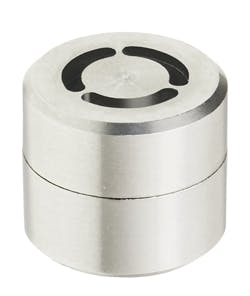Download this article in .PDF format
Coaxial terminations provide valuable functions in various systems and test setups, protecting against damage from high-level reflected signals. Unfortunately, they are sometimes mistakenly removed from an application, resulting in damage to expensive test gear.
But while mistakes will happen, a line of coaxial security terminations from Midwest Microwave, part of Cinch Connectivity Solutions, will help to avoid them. Three different male SMA security terminations are available for use at frequencies through 26.5 GHz, with low VSWR and a foolproof method for staying in place on the test ports they are meant to protect. These low-cost additions to a test setup can provide invaluable protection against costly errors.
Measurement systems often have a number of test ports in addition to the main input port and a reference port for a reference oscillator. For the sake of measurement accuracy, any unused port in a measurement system, such as auxiliary test ports, should be terminated in the system’s characteristic impedance—normally 50 ⦠at microwave frequencies. Also, damage can occur when high-power reflected signals essentially have nowhere to go, or reach a transmission “dead end” because of an unterminated, resistive signal port that turns the incident signal power into heat.
The Midwest Microwave TRM-244x series of security terminations provide practical protection for unused test signal ports at frequencies to 26.5 GHz, with removal possible only through the use of a special tool.
The potential problem of unterminated test ports can be eliminated through the use of the ingenuous Midwest Microwave TRM-244x series of security terminations (see photo). In terms of performance, they work like other coaxial terminations, with one large difference: they can only be removed by using a special tool.
The security terminations are based on the company’s standard TRM-244x series of terminations, modified with a passivated stainless-steel shell around the terminations as a protective mechanism. They provide the electrical performance of their TRM-244x series counterparts, with the outer shell preventing accidental removal from sensitive test ports.
Simple Attachment
The terminations can be attached by hand—fingers, specifically—with the final amount of torque applied by means of the company’s TLS-0017-ST-SMA-02 tool and an SMA torque wrench (clockwise to tighten). Once fully torqued and properly attached, they can only be removed by using the same tool and an SMA torque wrench (counterclockwise to loosen).
Three different dc-coupled terminations are available—models TRM-2444-MS-SMA-02, TRM-24440MS-SMA-02, and TRM-24430MS-SMA-02—with respective high-end frequency limits of 8.0, 18.0, and 26.5 GHz. The respective maximum VSWRs are 1.11:1, 1.19:1, and 1.30:1. The SMA male terminations have a characteristic impedance of 50 ⦠and will mate to standard SMA female connectors. The terminations are rated for 0.5-W (+27 dBm) nominal power-handling capability at room temperature (+25°C) and slightly less power at elevated temperatures.
Overall, the terminations are designed for operating temperatures from −55 to +125°C. They are available for frequency ranges that accommodate most standard microwave spectrum analyzers and other test equipment in need of signal port protection, and provide a simple but effective means of keeping a termination in place where needed. Just don’t lose the special tool.
Cinch Connectivity Solutions Waseca, 299 Johnson Ave. SW, Ste. 100, Waseca, MN 56093; (507) 833-8822
This file type includes high resolution graphics and schematics when applicable.



